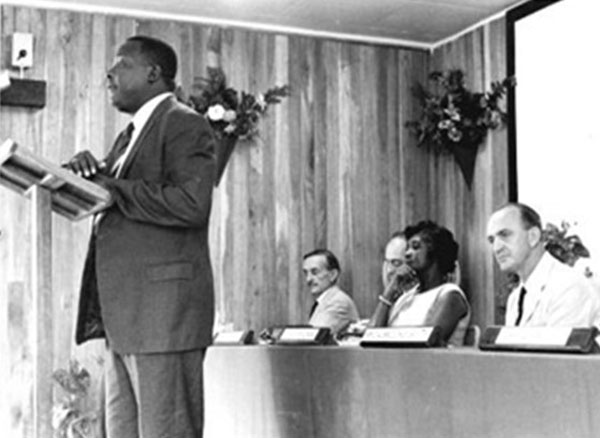Dear Editor,
We were some two generations apart. But we shared the same professional orientation in the sugar industry and its commitment to Technical Voca-tional Education and Train-ing. So we reflected. It was in 1957 that Bookers Sugar Estates established what was christened as the Port Mourant Apprentice Train-ing School (now GuySuCo Training Centre/Port Mourant). The first graduation was in 1962, after the five years of training in such trades as: auto mechanic, auto electrician, fitter, welder, instrument repair, agriculture mechanic, and more. The first intake included a high percentage of GCE ‘O’ level achievers who had opted for more technical careers. Exams were marked overseas by the London City & Guilds Institution, where Guyana enjoyed high ratings internationally. Successful graduates were funded by the industry to attend the University of Guyana, then went on to grow career levels such as Factory Manager, and even Estate Manager, after further exposure at relevant overseas Universities. Since the 1960s we have seen the establishment of several technical training institutions across the country, now overseen by a TVET monitoring structure recognised by comparator organisations throughout the Caribbean Region within the purview of the well-established CARICOM Single Market and Economy.
It is against this background that the future development of technical and vocational education must be considered. However, it will be necessary, indeed compulsory, to conduct a needs analysis of skills that could be utilised by private companies, public companies, as well as other organisational constructs that may possibly arise in a future world of work. Indeed the last instance has been the focus of contemplation and discussion by many businesses, as well as educational institutions around a world of persistently changing technology, some of which are not unlikely to be utilised by both local and foreign operators. So how do we identify and engage those old and new organisations who may be caught up in the future work environment? In the latter regard there has been some recent developments including the launching of a CARICOM Vocational Qualifications (CVQs) Online Training Programme last April, under the caption “CARICOM launches online training for TVET instructors”. Its objective is to provide online training to Assessors, Verifiers, and Instructors in order to enhance their capacity to ensure that artisans attain the occupational standards required for work within the CARICOM Single Market and Economy (CSME).
Interestingly it was reported that ‘the programme was the result of collaboration involving:
* The Commonwealth of Learning (COL)
* National Training Authorities (NTAs) of Grenada,
Barbados,Trinidad and Tobago
* The Caribbean Development Bank (CDB); and
* CARICOM Secretariat
Curiously there was no reference to Guyana as a participant, nor the other CARICOM member states and associate members. The above apart, it is worth noting that the target group is identified as Artisans clearly implying some previous related work experience, as distinct from training personnel to become artisans. It is in relation to the above that one notes the recent announcement of a critical development – the expansion of the North West Secondary School Practical Instruction Department (PID) in Region One – a project funded by the very Caribbean Development Bank ‘and the Government of Guyana through the Guyana Skills Development and Employability Project (GSDEP)’ within the purview of the Minister of Education. (It would be good to learn more of this project and of the involvement of our own TVET management authority). From a cautious perspective however, there needs to be clarification as to whether students of Region One, when trained to be artisans will automatically be equally eligible to receive the Caribbean Vocational Qualifi-cation (CVQ) as would ‘artisans’ with proven work experience – in Motor Vehicle repairs, Carpentry/Joinery, Elec-trical Installation, and Home Economics.
In the meantime one looks forward to learning to what extent Guyana will participate in the proposed CARICOM Vocational Qualifications Online Training Programme. But perhaps a more important question relates to the appropriateness of the technology utilised for the respective areas of training for ‘trades’ prone to changes in the future. As a historical reference to the pioneering of Technical and Vocational Education in Guyana, please see below a photo of the first graduation ceremony at the Port Mourant Apprentice Training School in 1962. Notably, it appears no coincidence that Minister of Education at the time was a woman, Ms. Winifred Gaskin, as if a forecast of the current tenancy of Minister Priya Manickchand.
Sincerely,
E.B. John





